
Teenage Mutant Ninja Turtles: The Cowabunga Collection (XOne) - Review
by Evan Norris , posted on 17 September 2022 / 5,199 ViewsIt's not quite over, but 2022 is already a banner year for Teenage Mutant Ninja Turtles fans. Three months ago, Tribute games, with the help of publisher Dotemu, released Shredder's Revenge, arguably the finest Turtles video game yet, and at the end of August Digital Eclipse and Konami combined to launch The Cowabunga Collection, a compendium of 13 early Turtles games spanning six years and five systems. The question remains: is this anthology as special as it seems on paper?
The Cowabunga Collection brings together 13 Turtles games developed by Konami between 1989 and 1994. These include four single-player action-platformers: Teenage Mutant Ninja Turtles (NES), Teenage Mutant Ninja Turtles: Fall of the Foot Clan (Game Boy), Teenage Mutant Ninja Turtles II: Back from the Sewers (Game Boy), and Teenage Mutant Ninja Turtles III: Radical Rescue (Game Boy); plus three versions of the Turtles 1v1 fighting game Teenage Mutant Ninja Turtles: Tournament Fighters on NES, SNES, and Genesis; and, most importantly, six beat-'em-up games, featuring Teenage Mutant Ninja Turtles (Arcade), its home console counterpart Teenage Mutant Ninja Turtles II: The Arcade Game (NES), its successor Teenage Mutant Ninja Turtles: Turtles in Time — in both arcade and SNES formats — plus Teenage Mutant Ninja Turtles III: The Manhattan Project (NES), and Teenage Mutant Ninja Turtles: The Hyperstone Heist (Genesis).
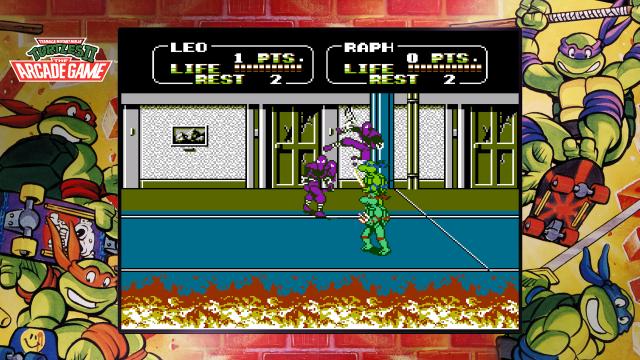
This is a generous and important collection of games, no matter how you slice it. It covers several different genres and platforms, and focuses on the most essential titles from the most relevant years of the Turtles video game franchise. Some entries end up better than others, of course.
The four action-platfomers are perhaps the most interesting — although not the best. Most people who grew up in the 1980s with a Nintendo system in the house will remember the original NES Teenage Mutant Ninja Turtles. Some may even experience acute PTSD when they boot it up for the first time in years. Yes, the 2D action game remains as intensely difficult as ever, thanks to respawning enemies, floaty physics, and unaccommodating level design. Yet it boasts some handsome sprites and memorable music, four playable characters, and an intriguing mix of top-down and side-scrolling areas. Thanks to bonus features added to this collection, like save states and rewind, you might actually beat this one.
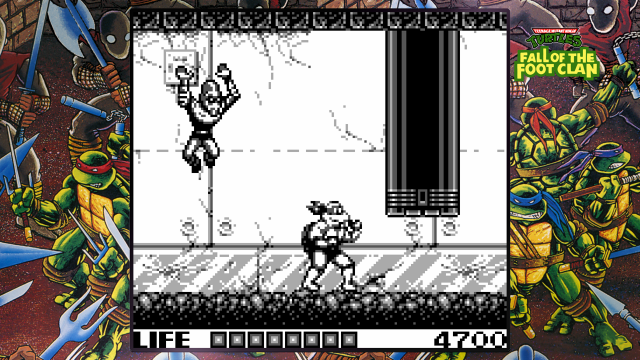
The remaining action-platform games all originate on Game Boy. The first, Fall of the Foot Clan, is one of the weakest offerings in The Cowabunga Collection. It's a little too short and too easy, and the gameplay is repetitive and clunky. Its sequel, Back from the Sewers, expands on the original in every way. It looks and sounds better and it plays more smoothly and more dynamically. It's one of the pleasant surprises of the anthology. Even more surprising is the third Game Boy title, Radical Rescue. Unlike the previous two Game Boy entries, this one is an early example of what would eventually be called Metroidvania. As Michelangelo, you'll explore an abandoned mine outside of Manhattan that Shredder has turned into a fortress. As you rescue your brothers, you'll unlock their unique skills, which will allow you to delve deeper into the underground maze. If you're a fan of Turtles and Metroid II, this is your dream come true.
No matter their interesting mechanics, the single-player Turtles games can't hold a candle to the cooperative multiplayer beat-'em-up titles included in the collection. These are the most addictive, replayable, and rewarding games in the set. They're also among the best. Things start with the original arcade hit Teenage Mutant Ninja Turtles, along with its NES port Teenage Mutant Ninja Turtles II: The Arcade Game. The arcade version, which supports up to four players simultaneously, is as fun as ever, with fast action, and beautiful sprites and locations. Because of a limited move set, the action can get somewhat stale after a while, but overall it's a blast. The home console conversion is good in its own right, despite significantly downgraded visuals and support for only two players in local co-op. Konami added two new levels, plus several unique enemies and bosses, to give the NES installment its own identity. Both are worth playing.
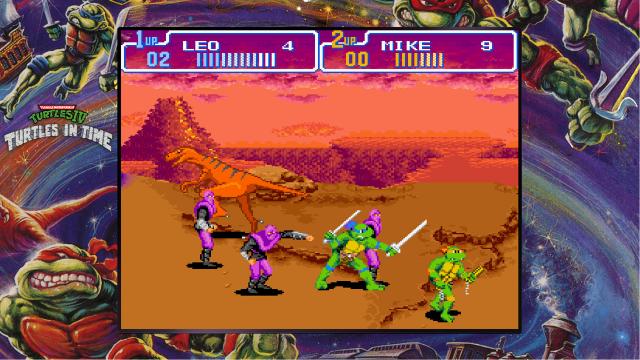
The follow up to the original arcade game, however, is where the Turtles series reached its zenith, at least until the arrival of Shredder's Revenge. Turtles in Time remains a legendary name over 30 years after it first launched. For decades it has been the measuring stick against which all other Turtles games — and many other beat-'em-up experiences — are judged. It's just that good, despite a rather short running time. As a result, both the original arcade incarnation of Turtles in Time and its excellent SNES port are the highlights of The Cowabunga Collection.
The arcade version boasts huge improvements over the first arcade game, including expanded move sets for all turtles, and special attacks unique to each fighter. The sprites, animations, and sound design are all boosted as well. Then there are the unique settings, inspired by the game's time-traveling gimmick. Leonardo, Michelangelo, Donatello, and Raphael will find themselves in common spots like New York City sewers and the Technodrome, but also in unlikely locations like a pirate ship, a steaming locomotive, and the far future. It's a blast.
The SNES port is also excellent. You could even argue it's superior to its arcade cousin. Yes, it's limited to two players in local co-op, a downgrade from the arcade's four player max, but it adds a brand new level, introduces new enemies and bosses, leverages Mode 7 for some spectacular moments, and tacks on time attack and versus modes — although, to be fair, neither is essential.
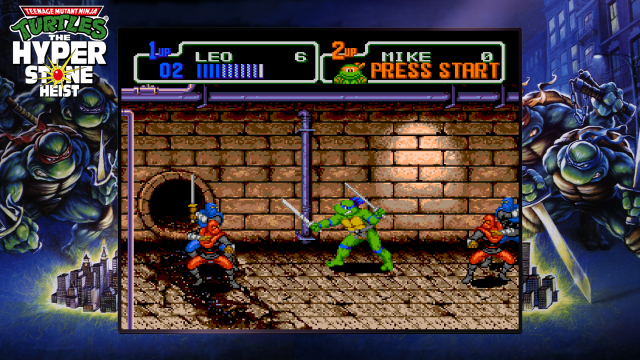
The final two beat-'em-up games are Hyperstone Heist, a Genesis exclusive that combines elements of the arcade game and Turtles in Time with some flourishes of its own; and The Manhattan Project, which launched on NES in 1992, very late into its lifecycle. Both are worthy of your time. While Hyperstone Heist has a distinct remix feel, its longer levels and tougher enemies make it stand out. Meanwhile, The Manhattan Project represents an improvement over Teenage Mutant Ninja Turtles II: The Arcade Game, thanks to more nuanced fighting mechanics and wildly creative levels. Don't sleep on either of these.
For fans who want to beat up each other instead of hundreds of Foot Soldiers, you're in luck. The Cowabunga Collection hosts three versions of the Turtles fighting game, Tournament Fighters. It's a treat to have three versions of the same game, since each one has its own story, modes, characters, and bosses. That said, after experimenting with all of them, you'll probably settle on the SNES edition. It's simply the best, due to more balanced combatants, prettier graphics, and faster combo-based action.
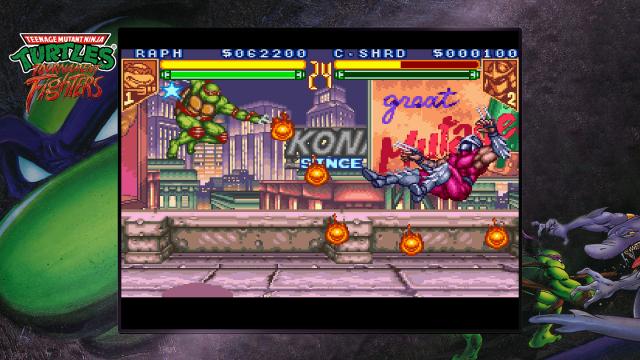
Whatever game or games you end up settling on, you'll be able to play them with more options and quality-of-life features than ever before, thanks to Digital Eclipse. For each game, you have the ability to create a save state, bring up a strategy guide with pro tips, map the controls to your liking, change the game's region, and adjust screen size, filters, and borders. Now, regrettably, each game only allows a single save file, and a single border, but the inclusions are nice nonetheless. Beyond that, each game arrives with a suite of "enhancements". These include general options like the ability to set the starting level and difficulty, and game-specific options like friendly fire in Hyperstone Heist, playable bosses in Tournament Fighters, and the freedom to remove slowdown and sprite flicker in Teenage Mutant Ninja Turtles (NES) and The Manhattan Project. In this area, Digital Eclipse went above and beyond.
The developer similarly went above and beyond with bonus features. From the main menu, you can access the "Turtle's Lair", a virtual museum of sorts with a huge assortment of promotional materials, behind-the-scenes artifacts, and examples from the Turtles multimedia empire. Included are scanned boxes, instruction manuals, catalogs, design documents, sprite sheets, storyboards, and more. You can also catch glimpses of Turtles TV show stills and comic books, and play every song from each included game in the collection at your leisure. It makes for an extraordinary tribute to all things Teenage Mutant Ninja Turtles.
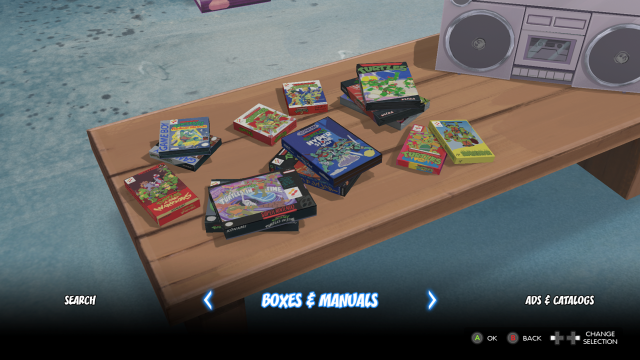
Where things are decidedly less extraordinary is online multiplayer. The Cowabunga Collection allows owners to play four of the 13 games online with friends or strangers, in private or public lobbies. These games are: Teenage Mutant Ninja Turtles (Arcade), Turtles in Time (Arcade), Tournament Fighters (SNES), and Hyperstone Heist (Genesis). First, it's a shame that not every multiplayer-eligible game enjoys online functionality. Teenage Mutant Ninja Turtles II: The Arcade Game and The Manhattan Project, especially, would be great additions.
Second, and more urgently, the frame rate during online multiplayer plummets as soon as more than two players are involved. Join a game with a single partner and there are slight frame rate issues and lag. Join a game with three or four teammates and suddenly the action turns into a slideshow. It appears that online players can increase their frame delay to ensure slightly smoother action, but in my experience that increase, along with a hard-wired connection, was insufficient to deliver smooth online gameplay. Hopefully a patch will arrive soon to boost performance.
2022 is the year of the tiger, but it might as well be the year of the turtle. In the past few months, fans of the Turtles series have been treated to an excellent throwback game in Shredder's Revenge, and now a far-reaching anthology of 13 franchise games — some middling, most decent or good, and at least one truly great. Importantly, the games come equipped with new quality-of-life improvements and customization options, and the package arrives with a robust digital museum celebrating all things Turtles. Not every game is worth playing, and the online component requires a serious overhaul, but for Turtles aficionados focused on solo and couch co-op play, this collection is like a pepperoni pie from Antonio's, the turtles' favorite pizza joint — a must-have.
This review is based on a digital copy of Teenage Mutant Ninja Turtles: The Cowabunga Collection for the XOne, provided by the publisher.
More Articles
This is my childhood, I love these games so much. Thanks for the review!
Same! I still remember pumping quarters into Turtles in Time at the arcade. And of course I remember wanting to break my controller in half every time I tried to disarm all those underwater bombs in the original NES game :-D
Right? That water level is a nightmare, but I still tried it over and over and over until I got the routine. That made me very happy, but the downside is that the sound of those electric algae will be burned into my memory forever lol.
I actually have a special place for Fall of the Foot Clan, the first GB game. I didn't have a NES of my own, so that was my Turtles fix. And it looks like they did try to take a lot of cues from the arcade game in making it.
I’ve gotten a lot of value from this collection. The online is kind of rough, though, and I wish they’d given the two NES games and SNES Turtles in Time online. When two players are playing it, it’s awesome. Unfortunately, I don’t know if an online patch will arrive before the online lobbies become ghost towns.








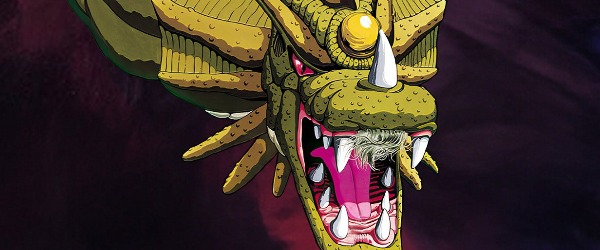
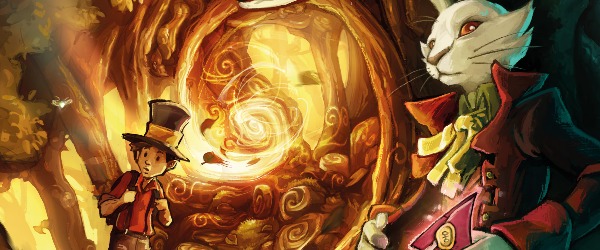
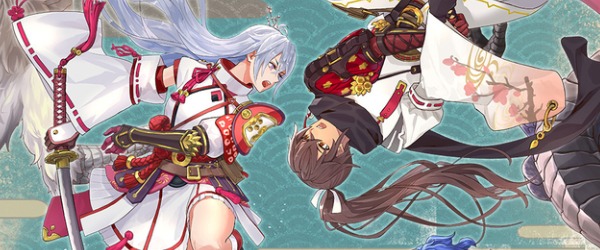
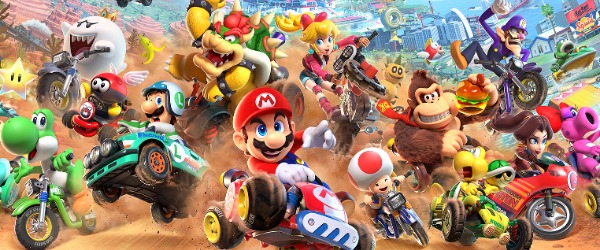










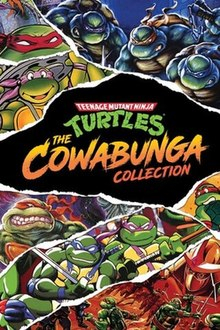



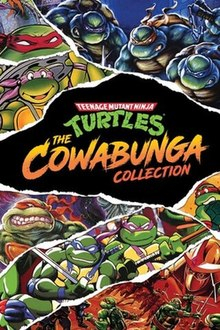

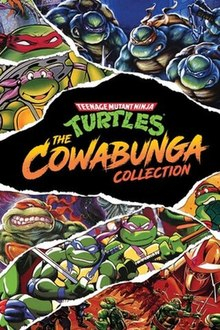

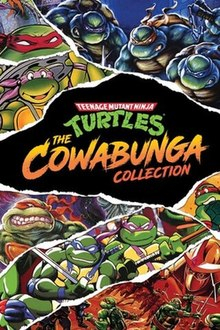

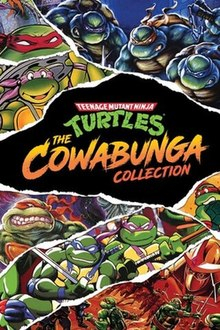

 Essay Pro
Essay Pro